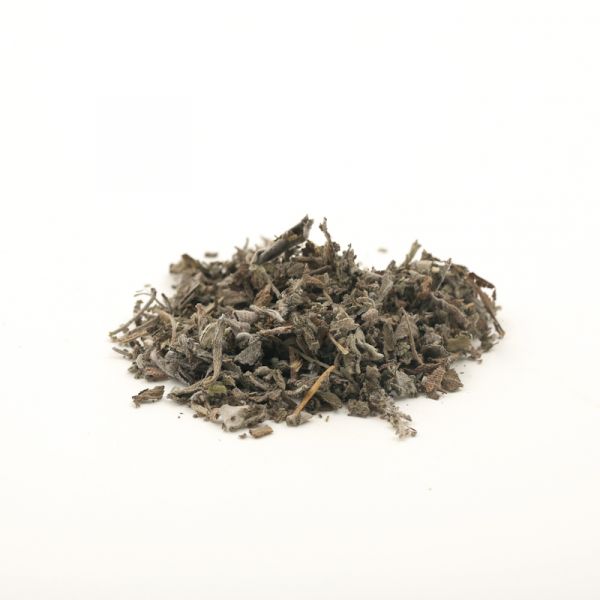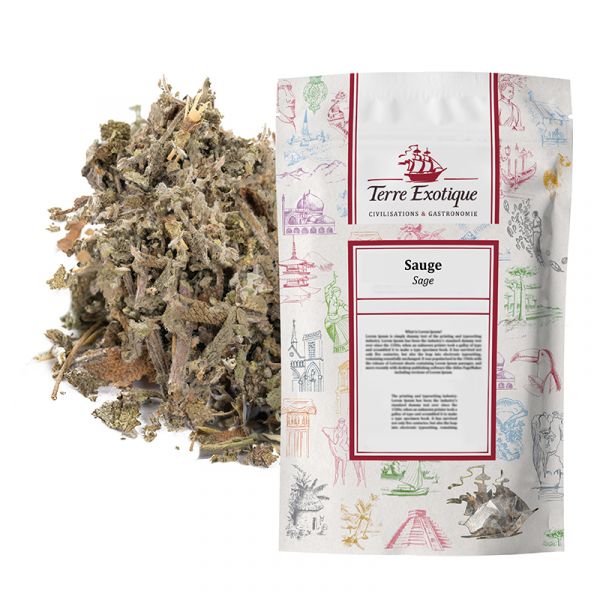



How to Cook with Sage?
Once coarsely chopped, sage leaves add character to a sautéed potato dish, a gratin, poultry with a creamy sauce, delicate fish, or a homemade vegetable soup. It is better to use whole sage leaves rather than ground ones. Add them to the dish at the last moment to preserve all their aromas.
Recipe Ideas for Using Sage
- Sage Butter: Melt butter in a pan, add fresh sage leaves, and sauté until they become crispy. Use this flavored butter to drizzle over fresh pasta or grilled vegetables.
- Sage Chicken: Start by stuffing chicken cutlets with fresh sage leaves and cheese, then wrap them in prosciutto slices before baking. Serve with a white wine and cream sauce.
- Sage and Roasted Pumpkin: Toss pumpkin cubes with olive oil, salt, pepper, sage leaves, and honey. Roast in the oven until tender and slightly caramelized.
- Veal Rolls with Sage: Wrap veal cutlets with sage leaves and Parma ham. Sear in a pan, then deglaze with white wine and chicken broth for a flavorful sauce.
- Roasted Potatoes with Sage: Toss potato wedges with olive oil, salt, pepper, and sage leaves. Roast in the oven until golden and crispy.
- Sage Risotto: Add finely chopped sage leaves to a creamy risotto halfway through cooking to intensify the flavor. Top with grated Parmesan and a few fried sage leaves for a crispy contrast.
Sage and Its Rich Aromas
Sage leaves emit a woody, earthy, and slightly camphor-like fragrance, with subtle notes of mint and eucalyptus. When dried or infused, these leaves release essential oils that amplify their aromatic profile, creating a distinct sensory experience. In cooking, sage is often used to flavor meat, poultry, and fish dishes, as well as in sauces and soups. Its rich aroma also makes it a valuable ingredient in perfumery and aromatherapy, where its stimulating properties are particularly appreciated.
The Botanical Origin of Sage
Sage is a herbaceous plant belonging to the Lamiaceae family. It naturally grows in well-drained, sunny soils, with woody stems and silvery-gray leaves that emit a strong, distinctive fragrance when crushed.
The History of Sage
Its name comes from the Latin "salvia" and specifically from the verb "salvere," which means to heal. It was also known as "salvia salvatrix," referring to the plant's medicinal properties. Since ancient times, this herb has been synonymous with longevity! Native Americans used sage as incense in their rituals, as once burned, it was believed to have hallucinogenic properties.
| Price/kg | 40 |
|---|---|
| Allergen | Absence |
| Native country | BULGARIE |
| Genus and botanical species | Salvia officinalis |
| Ingredients | sage |
| Contenance | 250g |
| TRACES EVENTUELLES D'ALLERGÈNES | céleri, sésame, moutarde, fruits à coques. |
 Français
Français 